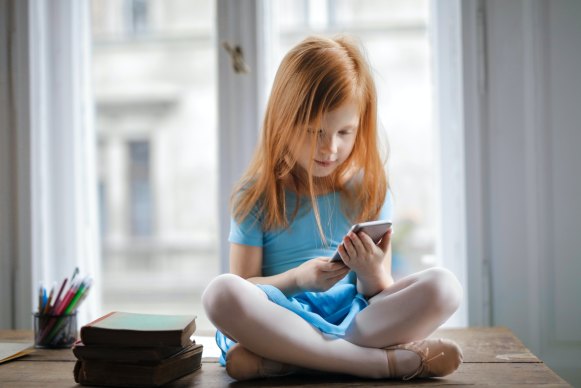
Save articles for later
Add articles to your saved list and come back to them any time.
Nobody wants their children staring blankly at a device for hours on end, but when discussing limits and configuring parental controls, it’s worth noting that “two hours of phone per day” is no longer necessarily a fair or useful limit.
After all, smart devices can be used for hundreds of different things. Detached swiping or mindless consumption of endless algorithmically recommended videos could be considered the junk food of device use and should rightly be minimised. But you might want a different limit for more engaged activities such as reading, or playing games with a friend.
It might be different again when using the device to create content, or for a screen-free activity such as listening to music or a podcast. Thankfully, current parental controls account for all this.
Kids are using devices from an earlier age, for many more purposes, making parental controls a must.
The most important piece of advice for getting started – and this applies not just to phones but also game consoles and any other connected gadget – is to make sure you do not hand a new device to a child before you’ve set it up.
Letting them set it up themselves can give them all the keys to any locks you try to put on later; you need to set it up yourself or at least alongside them.
Setting things up properly can make for some annoyances – for example, children aged under 12 technically can’t access the full version of Spotify, and their Google accounts will be cut off from some features – but it makes providing for their health and safety much easier.
iPhones and iPads
If you’re giving a child under 12 an Apple gadget, you will want to have one of your own already set up. If you don’t have any Apple devices yourself, monitoring a child’s Apple device is very difficult.
From your device, you can go to settings > family to add family members and create Apple IDs for children under 12. You can set other family members to be guardians of any children here, and you can share any Apple subscriptions with the rest of your family. But most importantly, when you set up your child’s device using their Apple ID, you will be able to use this section of the settings on your device to control what happens on theirs.
To start, you can create a downtime schedule to limit device use at certain times. Downtime can completely block the device, or restrict it to essential apps that you choose. Guardians can also override the schedule by allowing more time or imposing downtime whenever they want (though the child gets a five-minute warning if you do this).
The other thing to do right away is set content restrictions. There’s a long list of settings that will determine which apps can be downloaded, and can block media such as TV shows and books based on age ratings. Apple has a web content filter you can turn on that will block pages based on URLs and keywords, and you can also keep your own list of websites to allow or block.
Once you’ve set it up and your child is using the device, you will get a graph of daily activity, which you can break down to see exactly what apps and websites they have used and for how long. You can also turn on purchase approvals, which means you’ll get a notification when the child tries to download anything new from the store, and they won’t get it until you approve it.
Android
Google offers a similar suite of tools called Family Link, which you can get as an app on Android or iOS. The first thing to do is use the app to create a Google account for your child under 12, and you can also send invitations to any other guardians. When you set up the Android phone or tablet for your child, you use their Google account to log in, then you can supervise it via Family Link on your device.
For each device your child is signed in on, you can set a hard daily time limit, and/or a schedule for what times the device can be used. You can then set limits for individual apps – block them completely, set a daily time limit, or approve them for use at all times even after the device limit is reached.
There are also a range of content controls for Google services, including age ratings for apps, movies and books on the Play Store, the option to lock YouTube to YouTube Kids, and limits on the kind of information children can get from Google Assistant.
There are also filter options for Google Search that can remove or blur explicit images, and settings for Google Chrome that let you block or allow specific sites and turn on Google’s content filter.
At a glance, you can see which apps your child has used each day and for how long, and you can get a breakdown of what categories of personal data each app is collecting, and revoke those permissions if you choose. You can also require your child to ask permission to download new content, to pay for content, or to sign in to new non-Google apps that collect personal data.
Get news and reviews on technology, gadgets and gaming in our Technology newsletter every Friday. Sign up here.
Most Viewed in Technology
From our partners
Source: Read Full Article
